“We rewilded our yard DIY style – and got the neighbours on board too”
This American couple has spent the past few years turning their property into wildlife habitat while inviting neighbours and passers-by to join the movement.
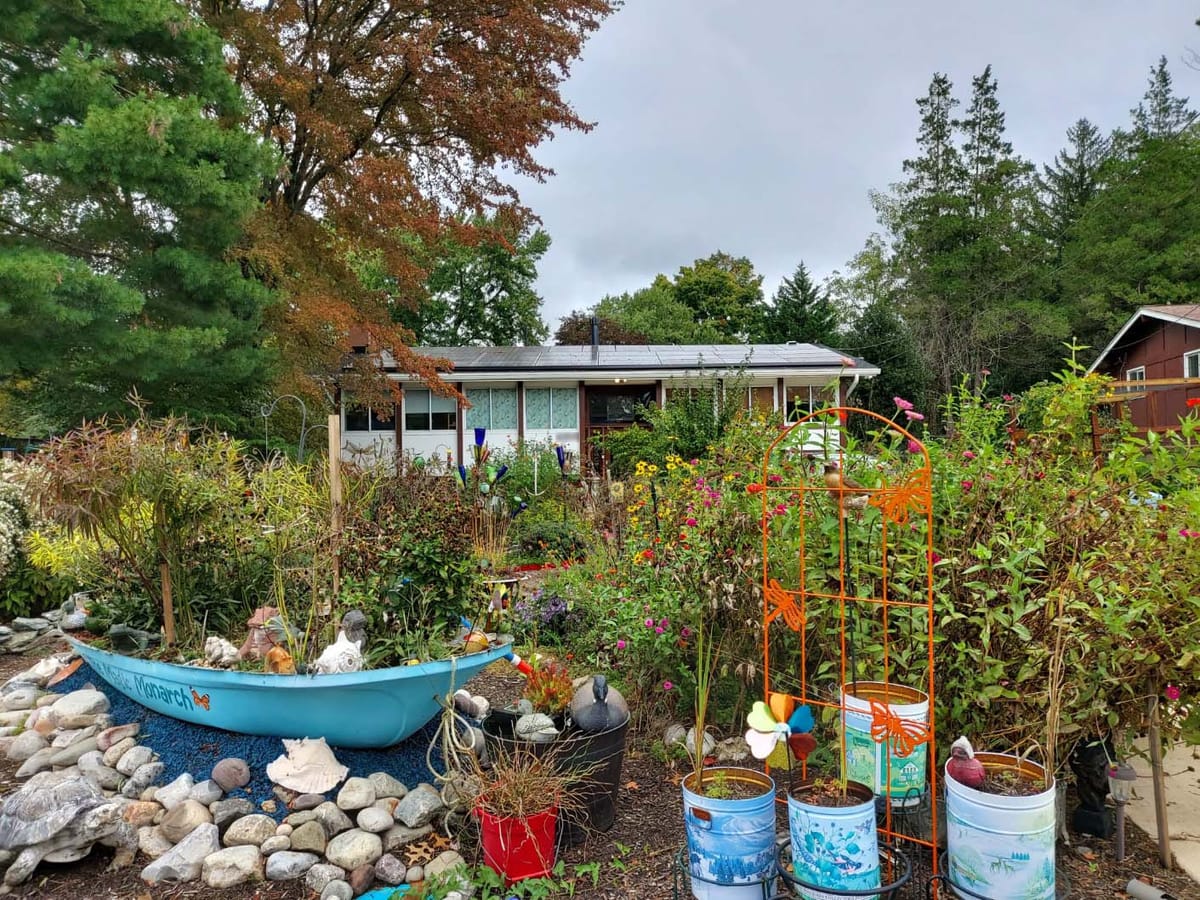
My wife Won-ok and I bought our dream house in 2021 with a vision of putting our environmental ethics into action: Grab the outdated notion of maintaining a green grass lawn and yank it out by its roots.
It was time to rewild.
Time to join the movement of people who are converting boring, earth-taxing yards into wild micro-havens that aid all kinds of creatures great and small – and help combat climate change.
But how would we start transforming our four-tenths of an acre in the Washington, D.C., suburb of Silver Spring, Maryland?
Like many people, we first asked a company how much it would charge to make it happen.
We gave a polite no-thanks to a landscape architect who quoted us $6,000 USD just to design our new urban oasis – not to do any actual labour. Do-it-yourself route, here we come! Won-ok and I aren’t ecologists, but we’re eager learners and fierce workers, middle age be damned.

We started small, spray-painting a 10-foot (three-metre) oval-shaped island on the grass and digging it out. We didn’t have enough expertise to develop a full-scale landscape masterplan, but perhaps our brains could break the yard down into bite-size chunks.
Little did we know that those first shovels full of earth would launch a journey of unimaginable joy. Or how greatly our work would transform not just our home, but our lives.

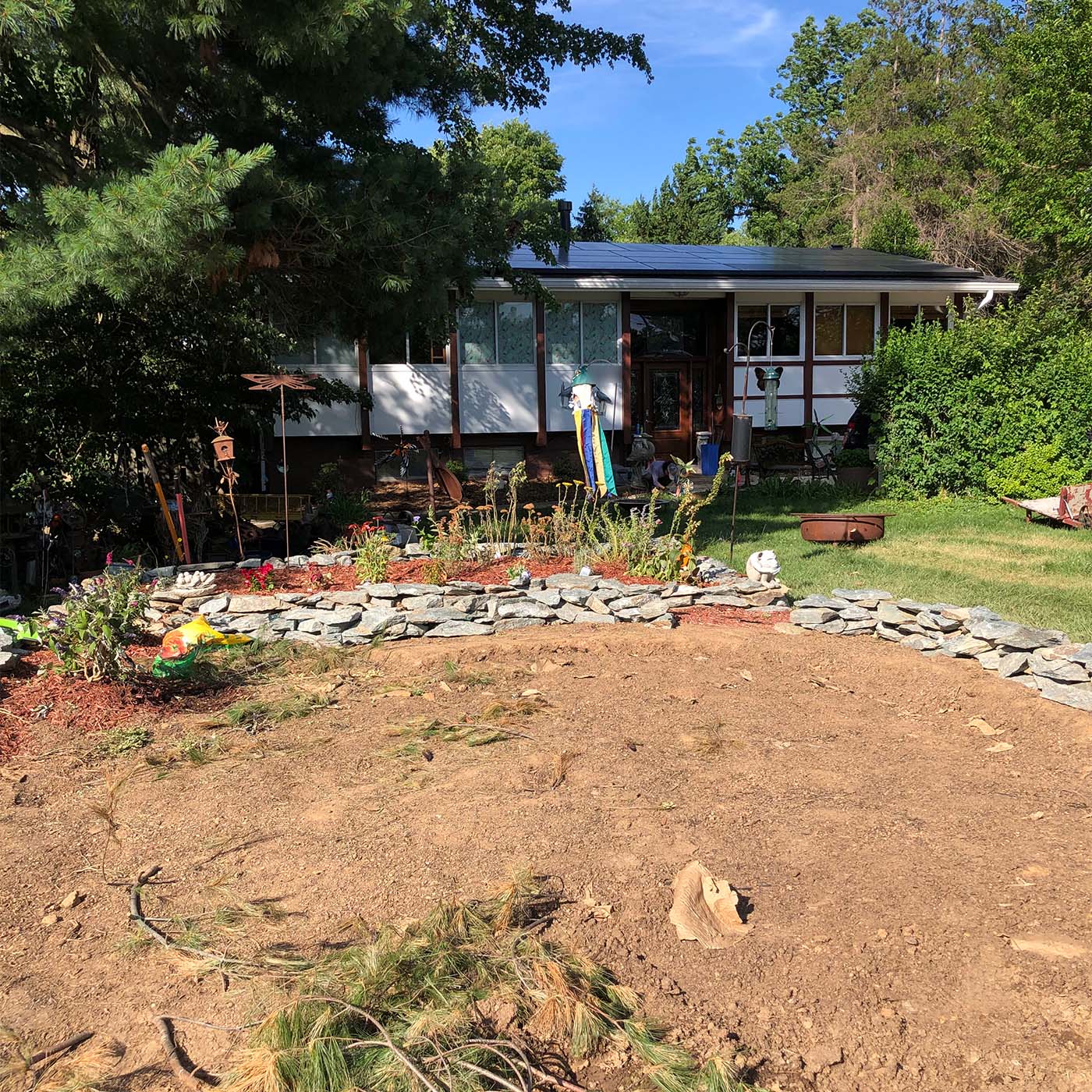
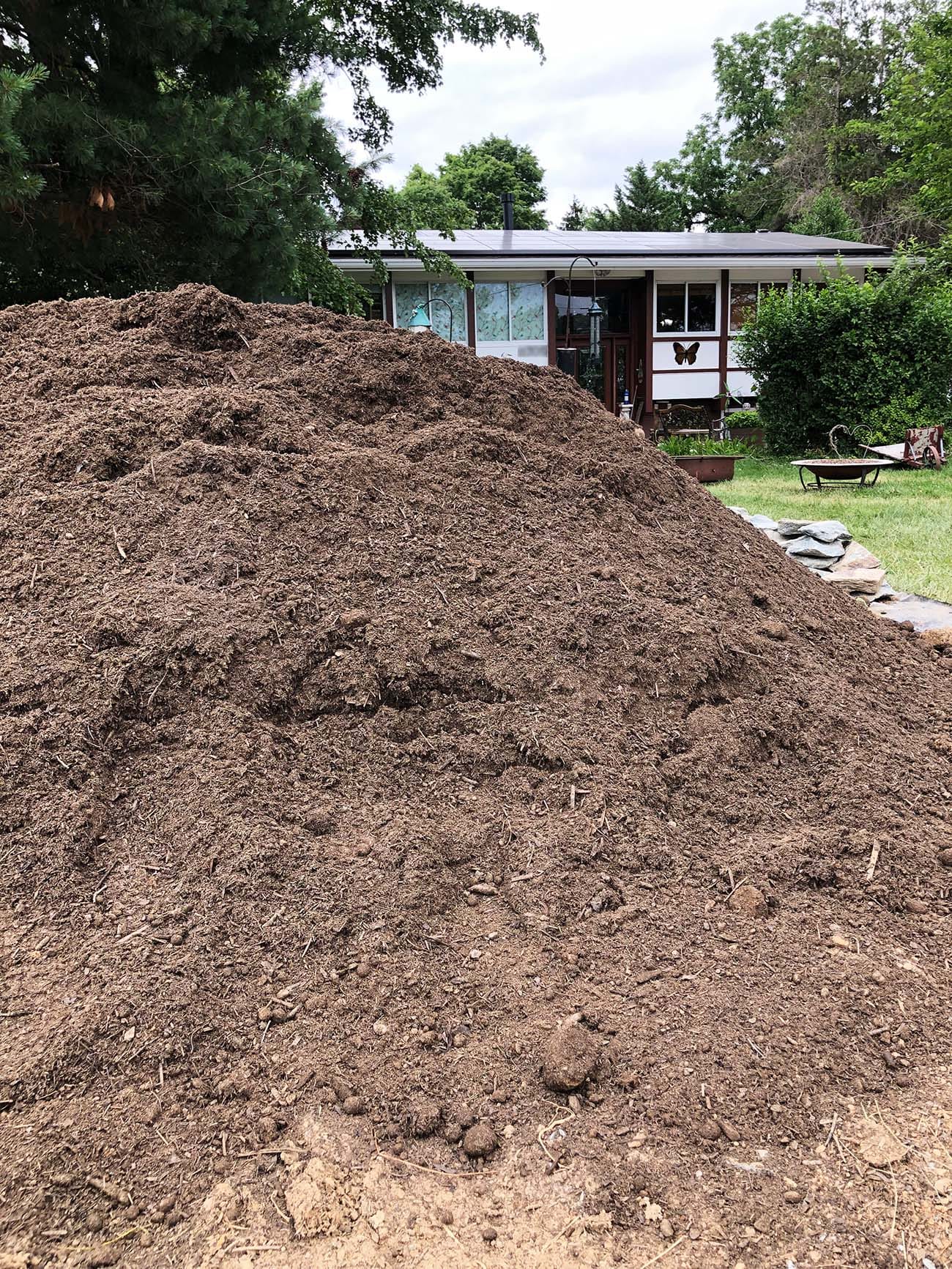
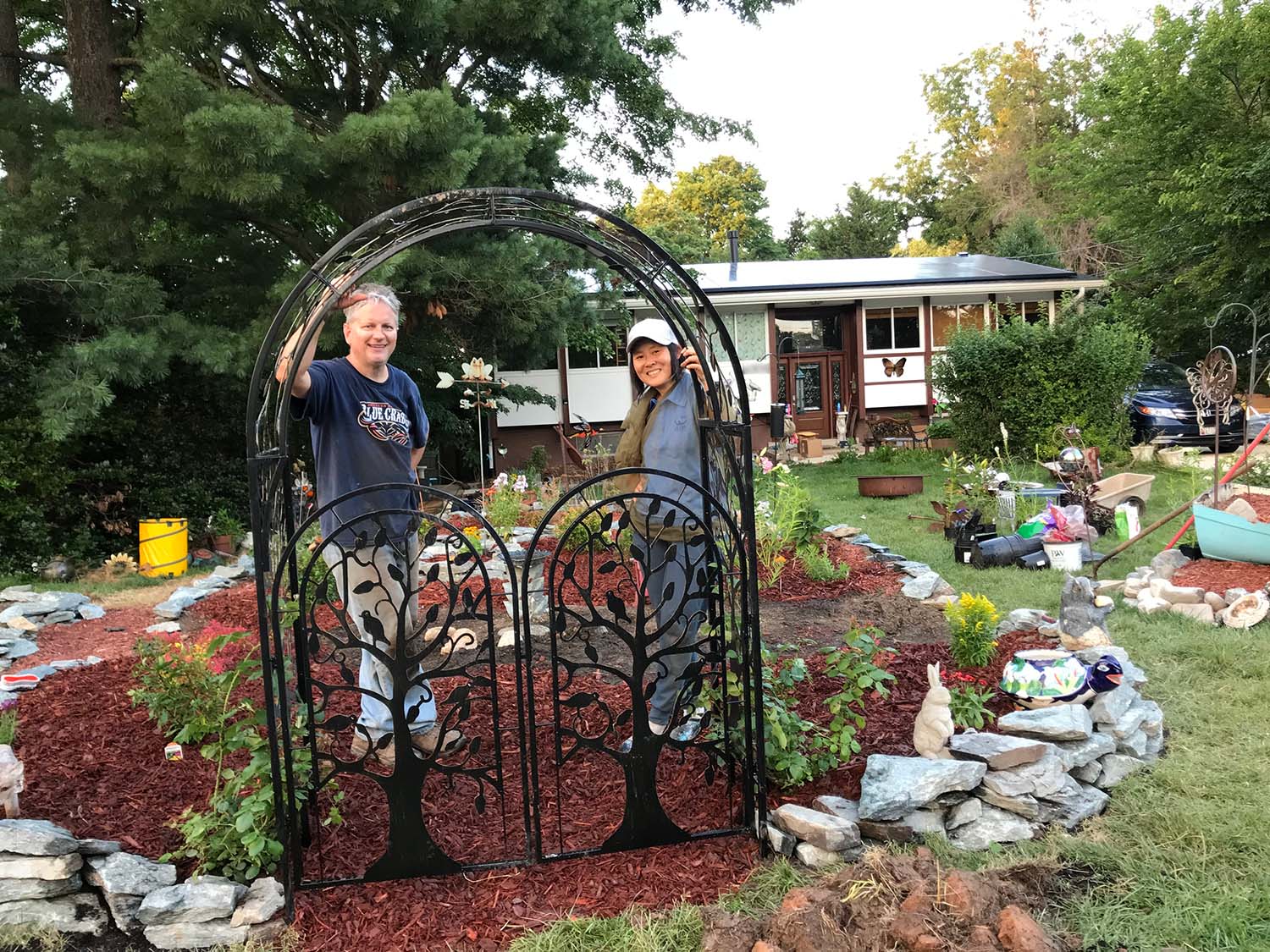
The yard in progress. At bottom right: Christopher Lancette and Won-ok Kim. Photos: Christopher Lancette.
Gaping hole in the ground accomplished, we headed to our favourite plant nursery for advice. (Finding a nursery staffed with knowledgeable people has been a key to all our gardening and landscaping projects.)
“What can we do for birds and butterflies?” we asked.
The nursery sent us home with a starter kit of milkweed plants and other native species to attract a variety of pollinators.
We supported our nursery knowledge by taking a few online classes and reading all we could about rewilding. The process of “dig first, figure out what to plant later” became our mantra for the next two years.
So did turning up more resources.
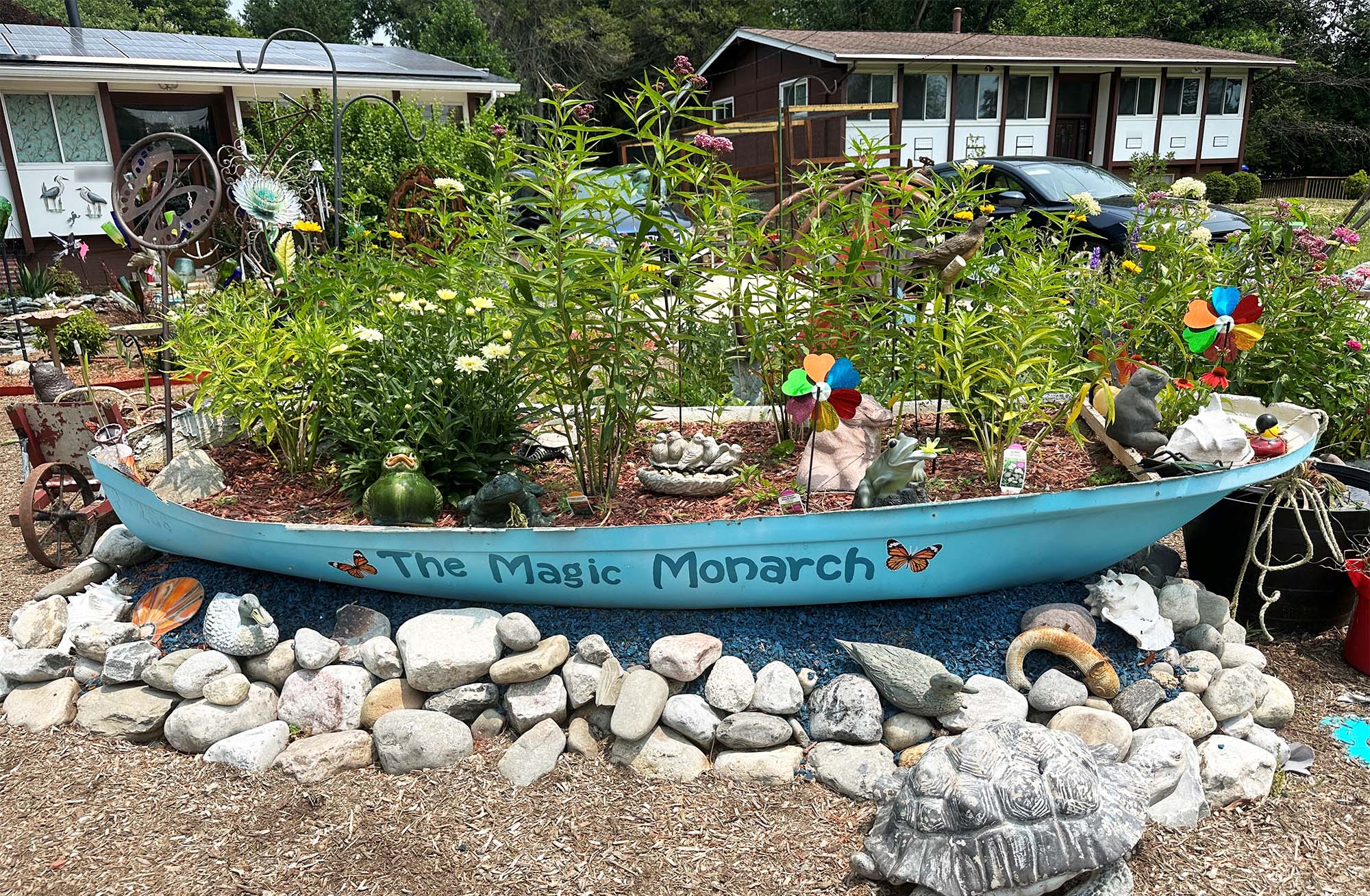
A local rock quarry enabled us to try projects that were more backbreaking, starting with a 25-by-15-foot (7.5-by-4.5-metre) raised-bed garden lined with two tons of hefty garden wall stones they delivered to our yard. We moved and stacked every single one of them with our own hands. The same for a one-ton 17-by-12-foot (5-by-3.5-metre) crescent-shaped island – and for the two large dump truck loads of soil. Another truck poured a mountain of wood chips into our driveway so we could create walking paths between the islands. Lowering and moving the masses across the yard was equal parts Zen and Shawshank Redemption escape.
A friend told us that one hole-in-progress looked like a heart, so we dug the rest of the space in that shape and bordered it with garden rail that we painted bright red.
Heart is what this is all about.

We populated every island with a wide variety of native flowers and bushes, sometimes taking the “Noah’s ark” approach of bringing two of everything home from the nursery before we learned that’s not always the best design for Mother Nature.
Discarded objects began finding their way to us, our yard becoming a rescue sanctuary for crippled stone, ceramic and wood-carved wildlife. We found a rotting fibreglass boat destined to die in a landfill and upcycled it into a raised-bed garden for our favourite friends: monarch butterflies.
We named the vessel “The Magic Monarch” and constantly visit it and the surrounding milkweed patches we’ve planted, hoping against hope that the orange and black miracles will come.
But that isn’t the only magic that’s unfolding.
Seemingly overnight, critters of all kinds began ambling, flying, buzzing, crawling, slithering and hopping to our little archipelago. We now cohabitate with native plant species that support not only the monarchs but countless other pollinators, birds, chipmunks, rabbits, turtles, groundhogs, all kinds of insects, rotund rat snakes and more.


Some visitors to the garden. Photos: Christopher Lancette.
One hundred percent of our front yard and expanding parts of our backyard grass are now gone, replaced by wildlife habitat that serves Mother Earth and doesn’t make our neighbours mad. While we made sure not to buy a home that came with a dreaded Homeowners Association (HOA) that might fight our every move to lend nature a hand, we did fear backlash from our new neighbours.
They love it!
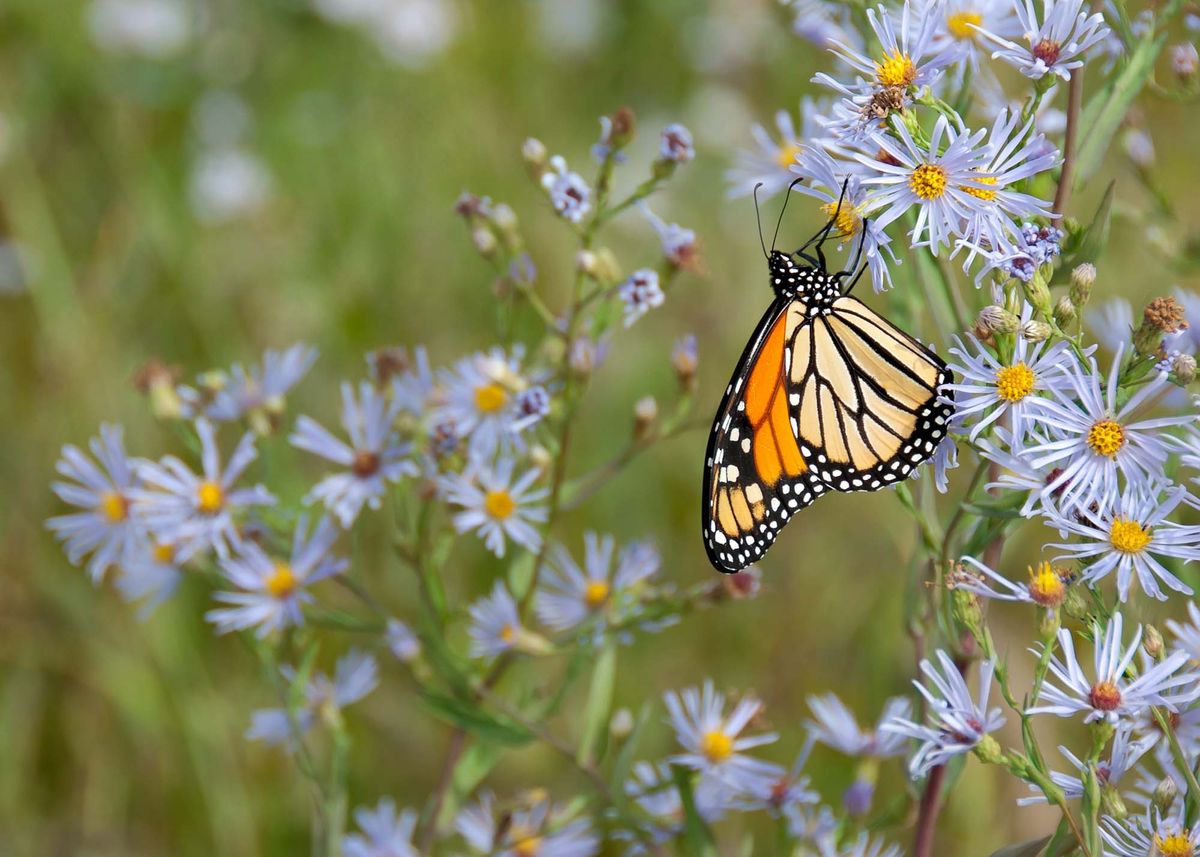
They’re not alone. People are constantly passing by our house as they enter a regional park on our street. A day rarely goes by in which at least a few of them don’t stop and tell us how deeply moved they are by what they see. We know we’ve made the planet proud when they ask us for advice on how to get started on rewilding projects of their own. Our impact will multiply even more in the months ahead when we add an informational kiosk to the front yard. It will include a link to a soon-to-be-created section of a pro-bono website we run to celebrate our beloved neighbourhood creek.
But it’s not just our yard that’s undergoing a metamorphosis. We’re changing, too.
I now start every morning by leaning against a beloved red maple tree and looking out across the fruits of our labour. I meditate and offer up a prayer to Mother Earth, asking her to help me be of greater use to her. My ego humbled and mind slowed, I live the day in a more mindful, purposeful and fulfilled way.
Won-ok joins me for afternoon sitting sessions to admire our ever-ongoing work that to date has cost less than the proposed $6,000 design fee – and given us an invaluable education. We greet the birds and the bees and the chipmunks. The universe occasionally even blesses us with the sight of a monarch flittering across the yard.




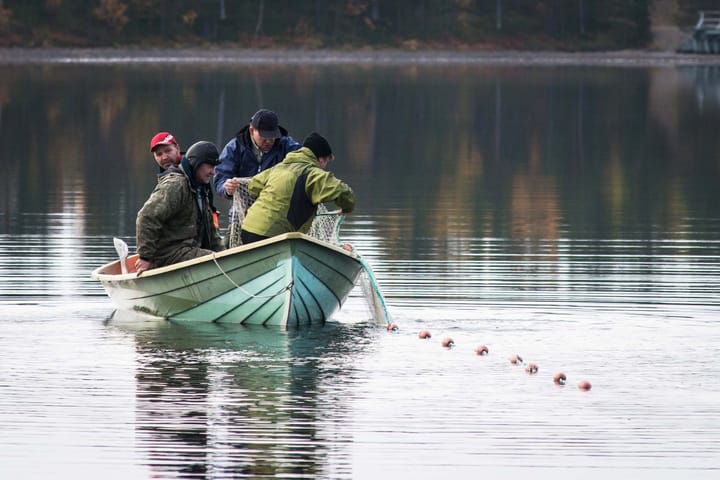


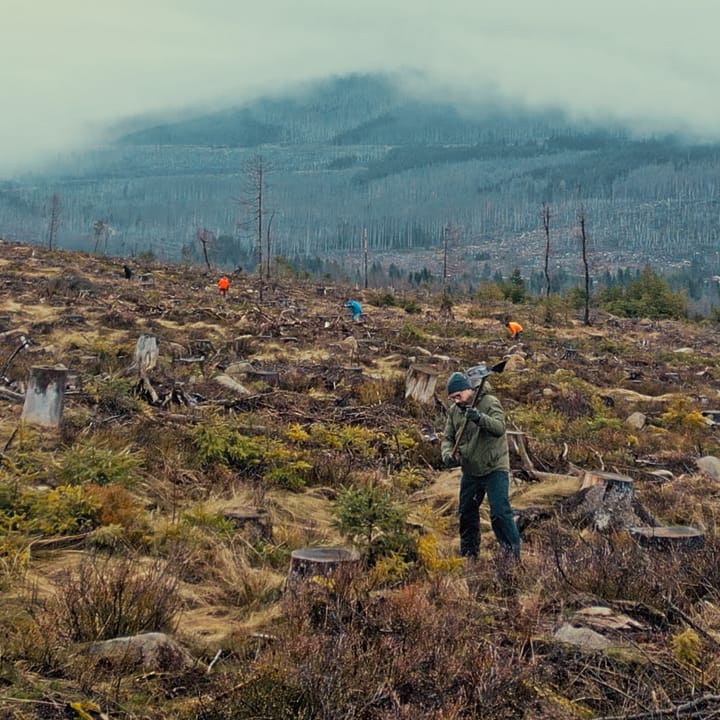
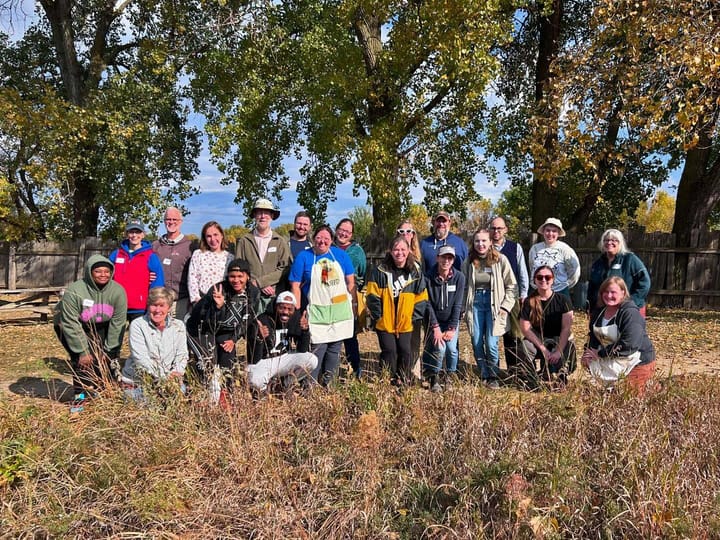

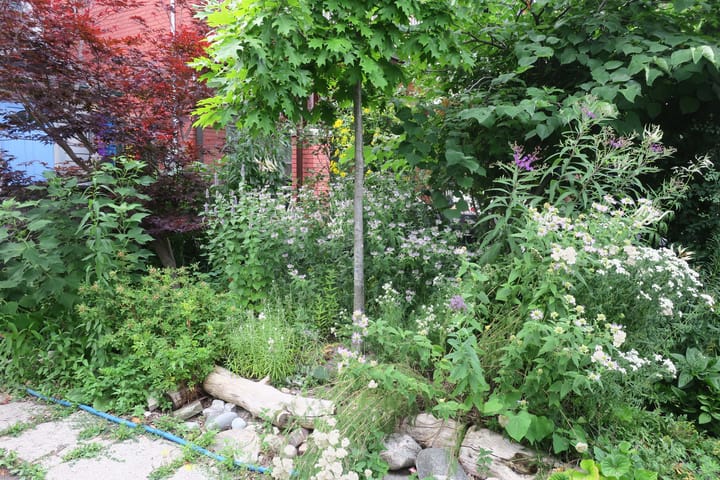

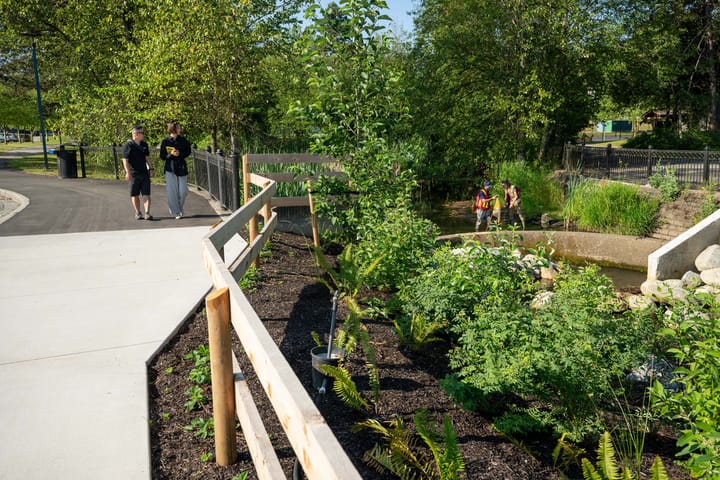
Comments ()